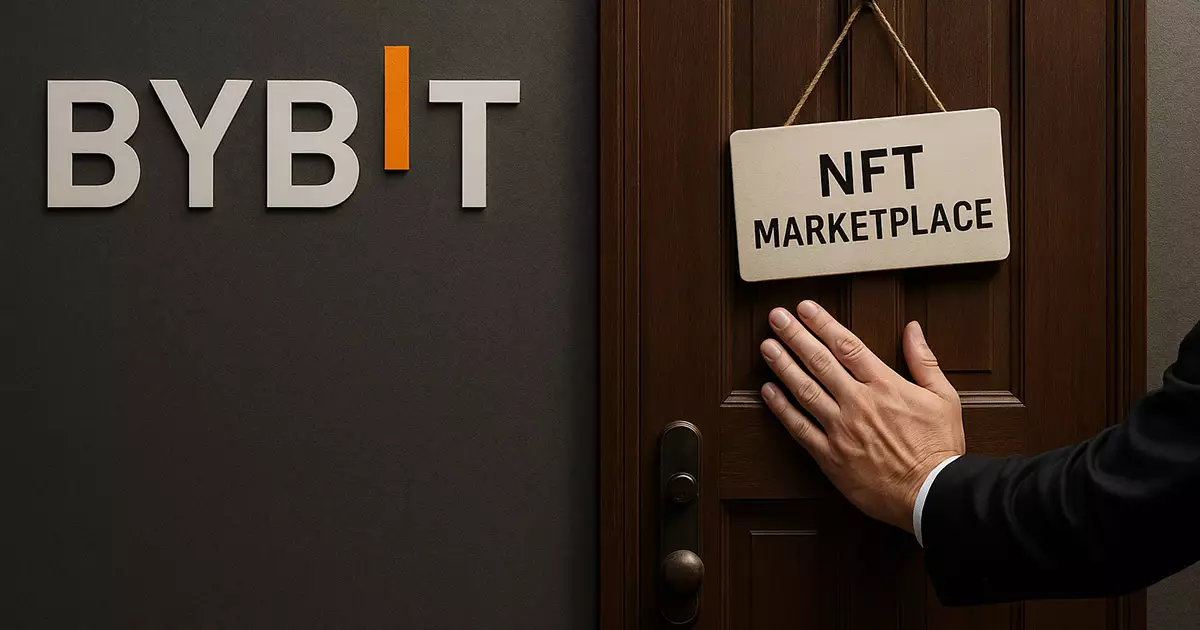In a staggering turn of events, Bybit, a prominent cryptocurrency exchange, has decided to shutter its NFT Marketplace alongside its Inscription Marketplace and Initial DEX Offering (IDO) product pages in a move that ostensibly aims to streamline services and enhance user experience. However, let’s peel back this facade and confront the unpleasant reality: the NFT market has been in a downward spiral, and Bybit’s decision is emblematic of the broader disillusionment pervading this space. The shutdown officially takes effect on April 8 at 16:00 UTC, compelling users to transfer their digital assets promptly—an alarming reminder of the instability that continues to plague the realm of digital collectibles.
Declining Demand: A Market in Free Fall
For those who remember the feverish hype of 2021, it’s painful to witness the stark contrast reflected in current NFT trading volumes. Reports indicate that major collections have seen their trading numbers plummet by over 95%, and the number of active wallets engaging in NFT transactions has dropped from a staggering half a million to less than 20,000 in just two years. Is it too harsh to declare that the NFT marketplace is nothing short of a mirage?
Notably, total NFT sales have decreased dramatically, with digital sales falling to $1.5 billion during Q1 of this year compared to $4.1 billion during the same period last year—a decrease that sends shivers down the spine. March alone witnessed an appalling 76% decline year-on-year, leaving us questioning the sustainability of a market once buoyed by a flurry of speculative activity.
The Ripple Effect: Institutional Retreats
Bybit’s predicament is not isolated. Kraken gracefully exited its NFT marketplace, and even established players like LG Electronics have shuttered their platforms, such as LG Art Lab. What does this collective retreat imply about the future of NFTs? Are we witnessing an undeniable mark of an industry grappling with existential crisis fueled by declining institutional interest?
While niche collections like Pudgy Penguins experienced a minor uptick of 13% to reach $72 million in sales due to savvy marketing partnerships, they remain exceptions in a sea of dwindling interest. The once-hyped Bored Ape Yacht Club has now slipped into obscurity, a reminder that fame in the NFT world can be fleeting.
The Security Paradox: A Disturbing Threat
Adding another layer of despair to the already crumbling landscape, Bybit’s recent security breach, where North Korean hackers pilfered an estimated $1.4 billion in assets, underscores the risks inherent in engaging with these virtual assets. With much of the stolen crypto still unaccounted for, the security threats amplify the urgency for platforms to reassess their operational focus.
The confluence of dwindling demand, retreating institutions, and vicious security vulnerabilities paints an ominous picture of the NFT market, once purported to be the cutting-edge future of digital asset ownership. If the current trajectory continues, we may soon find ourselves in a world where NFTs are a mere footnote in economic history, serving as a cautionary tale for speculative excesses.














Leave a Reply